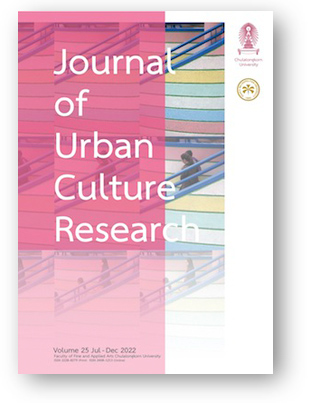Urban Identity Represented by Concept Stores Converted from Machiya in Central Kyoto
DOI:
https://doi.org/10.14456/jucr.2022.31Keywords:
Urban Identity; Kyoto; Machiya; Concept Store; Retail; Architecture; JapanAbstract
The city grid plan of Kyoto gave birth to rectangle street blocks and long narrow land plots for the layout of machiya, a traditional townhouse. From the last two decades, many old buildings in Kyoto including machiya were restored for contemporary use as concept store which widely known for its distinctive design that can represent Kyoto's urban features. This research aims to clarify the relationship between modern concept stores and the traditional urban fabric of Kyoto by selecting nine concept stores as case studies to collect data on-site for doing content analysis from their spatial planning to physical design; from brand concept to urban context and from selling items to façade design. The study found that the relationship between concept stores and urban fabrics was created through visual connection from interior items for sale, to exterior design of building facade that blends with the context of the neighborhood.
Downloads
Published
Versions
- 2023-01-13 (2)
- 2022-12-20 (1)
How to Cite
Issue
Section
License

This work is licensed under a Creative Commons Attribution-NonCommercial-NoDerivatives 4.0 International License.
Authors authorize the JUCR to publish their materials both in print and online while retaining their full individual copyright. The copyright of JUCR volumes is retained by Chulalongkorn University.
The views and opinions expressed herein are those of the individual author(s) and do not necessarily reflect the policies or opinions of the Journal (JUCR), it editors and staff, Chulalongkorn University, or Osaka Metropolitan University.








